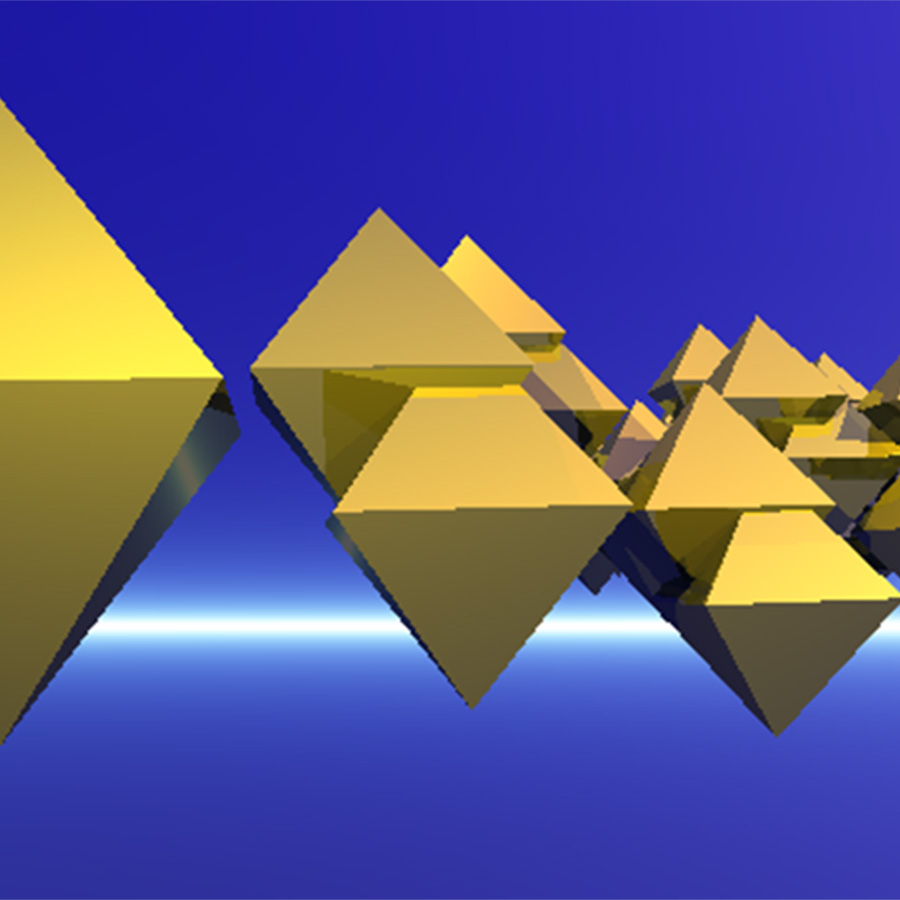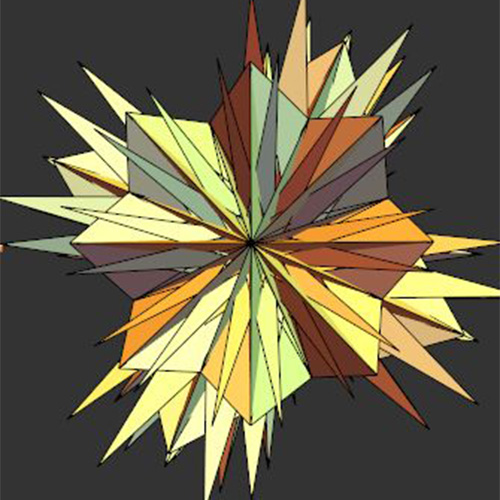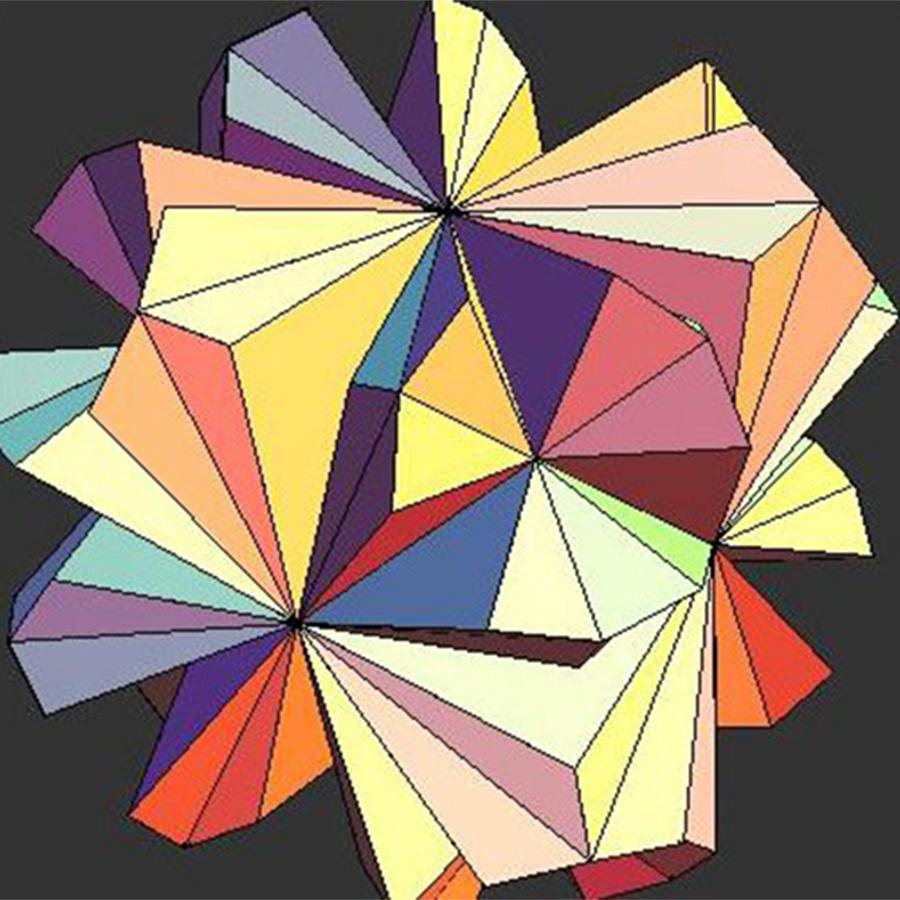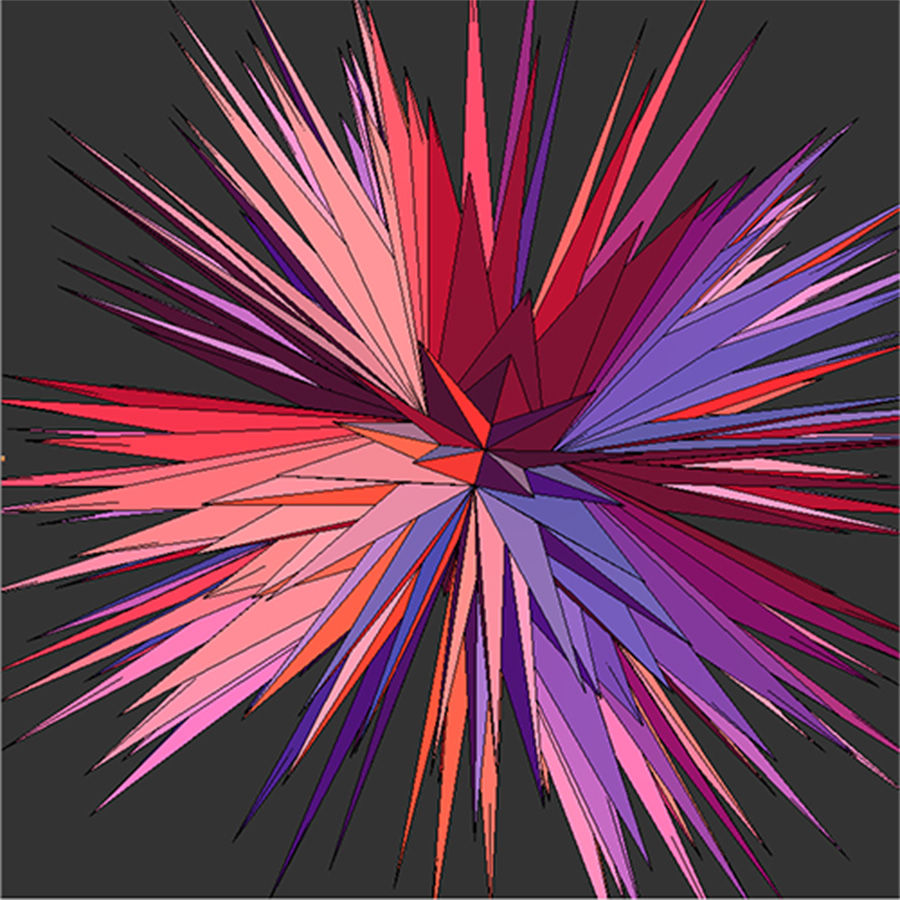
















Virtual 3D Sculptures (from 1995)
The virtual 3D consrtuctions and three-dimensional sculptures developed with Mathematica, which were created in a number of programs, are all based on mathematical constructions. While this is obvious for some series – like Octahedrons and Polyhedrons – it’s not so obvious for other objects, such as those that look like folding airplanes. Some of these 3D motifs were “rendered” in a second processing step using the Bryce software. This made it possible to cover the objects with textures and also place them in a three-dimensional space with congruent light and shadow effects. Some of these 3D objects were placed in landscapes, also developed with the Bryce software, which led to the series of works called Fantastic Worlds.















Herbert W. Franke has programmed also dynamic sequences that runs parallel in two windows positioned next to each other. One of them was called Stereo Pearls. And thus a three-dimensional space is generated through suitable optics.
A collaboration with Professor Konrad Polthier from the Zuse Institute Berlin led to two film projects for which the individual images were programmed with Mathematica and then the images were interpolated in the institute and converted into the cinematic sequences Butterfly and Polyhedron.
Herbert W. Franke has been working actively with Mathematica since 1995 – back then he started with version 3. The continuously developed and expanded programming language of Wolfram, which nowadays is used in research and development worldwide, simplified codes for all visualizations of mathematical special fields and was therefore ideally suitable for Franke’s aesthetic experiments. He was particularly interested in the interactive use of computer graphics and the transition to animation. Franke has implemented numerous programs with Mathematica.
See for more Mathematica series:
Serien El-Milik und Flares
Serien Lissajous und Space Loops
Serien Peru Pattern und Intarsia
Serien Slings und Kalligraphien
